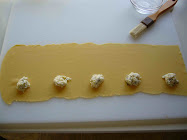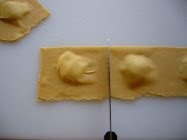
A year ago, if you asked me if I would ever post a picture of raw duck skin, the answer would have been a definitive no. Clearly, my definition of what constitutes a sexy food photo has changed.
Today, lipids are sexy. Fat is a necessary component of cooking, but we sometimes have a weird relationship with it. On one hand, we tend to shy away from away from it, opting for the fat-free version of anything at the grocery store, but on the other hand, we also drive our cars up to the fast food joint and ask to be supersized. As with most things, fat is good for us if we use it in moderation. It is a vehicle for flavor and there are many fat-soluble nutrients which means, if you’re pouring fat-free dressing over that salad of yours, you could be missing out on a lot of the nutritional benefits.
Now, before I get too preachy, because this blog is about good cooking, not food policy, let’s move on to the duck. If you have yet to cook with duck fat, you are in for a treat. The fat adds a wonderful, rich flavor to things like sautéed potatoes. If you ever cook your eggs in a bit of the bacon grease left in the pan, cooking with duck fat is the same concept. The animal fat comes with its own flavor that, when paired with the right food, just can’t be matched by cooking in olive oil or butter.
One downside to cooking with duck fat is that it is pretty pricey. So, one night at school, when we finished breaking down a case of whole ducks for the restaurant at FCI and were left with extra duck skin, I jumped at the chance to take it home. Three quart containers of duck fat (think about 16 cups) came home with me for rendering. It may sound like an involved project, but rendering your own duck fat could not be more simple. Here are the basics:
Place your duck skin in a pot. Add no more than one inch of water to the pan. If you only have a small amount of skin, add less. Place the pan over medium heat and let it come to a simmer. Over the course of an hour or so, the skin will render the fat and the small amount of water in the pan will evaporate. When the skin starts to turn golden, you know it has rendered its fat. You can drain off the fat and discard the skin or, if you want a double reward, let the skin continue to render until it turns a dark brown. The skin will be crisp and you are left with both rendered duck fat and delicious duck cracklings. Be sure to keep an eye on it at the end. If the skin goes from brown to burnt, you will impart a burnt flavor to the fat and all will be for not. Just keep in mind that with a bit of salt, duck cracklings can be highly addictive and then that whole moderation thing I mentioned earlier goes completely out the window. The choice is yours.
Three quarts of duck skin left me with about two quarts of duck fat, which is more than I will be able to use anytime soon so I am planning on giving some away as gifts. Trust me. Your food-obsessed friends will be forever grateful. The last time I checked, duck fat was going for about $20 a half quart.






